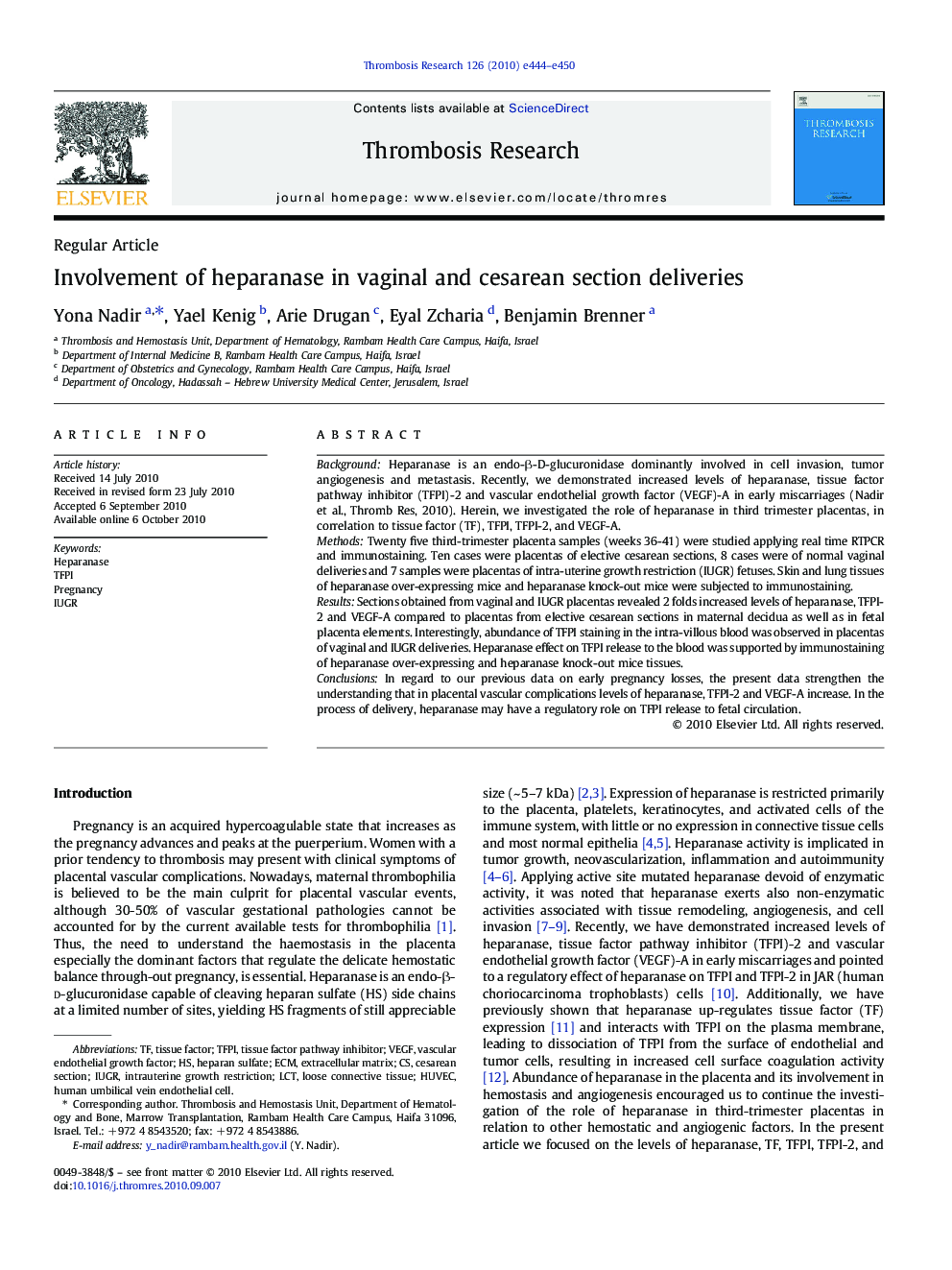| Article ID | Journal | Published Year | Pages | File Type |
|---|---|---|---|---|
| 3029134 | Thrombosis Research | 2010 | 7 Pages |
BackgroundHeparanase is an endo-β-D-glucuronidase dominantly involved in cell invasion, tumor angiogenesis and metastasis. Recently, we demonstrated increased levels of heparanase, tissue factor pathway inhibitor (TFPI)-2 and vascular endothelial growth factor (VEGF)-A in early miscarriages (Nadir et al., Thromb Res, 2010). Herein, we investigated the role of heparanase in third trimester placentas, in correlation to tissue factor (TF), TFPI, TFPI-2, and VEGF-A.MethodsTwenty five third-trimester placenta samples (weeks 36-41) were studied applying real time RTPCR and immunostaining. Ten cases were placentas of elective cesarean sections, 8 cases were of normal vaginal deliveries and 7 samples were placentas of intra-uterine growth restriction (IUGR) fetuses. Skin and lung tissues of heparanase over-expressing mice and heparanase knock-out mice were subjected to immunostaining.ResultsSections obtained from vaginal and IUGR placentas revealed 2 folds increased levels of heparanase, TFPI-2 and VEGF-A compared to placentas from elective cesarean sections in maternal decidua as well as in fetal placenta elements. Interestingly, abundance of TFPI staining in the intra-villous blood was observed in placentas of vaginal and IUGR deliveries. Heparanase effect on TFPI release to the blood was supported by immunostaining of heparanase over-expressing and heparanase knock-out mice tissues.ConclusionsIn regard to our previous data on early pregnancy losses, the present data strengthen the understanding that in placental vascular complications levels of heparanase, TFPI-2 and VEGF-A increase. In the process of delivery, heparanase may have a regulatory role on TFPI release to fetal circulation.
